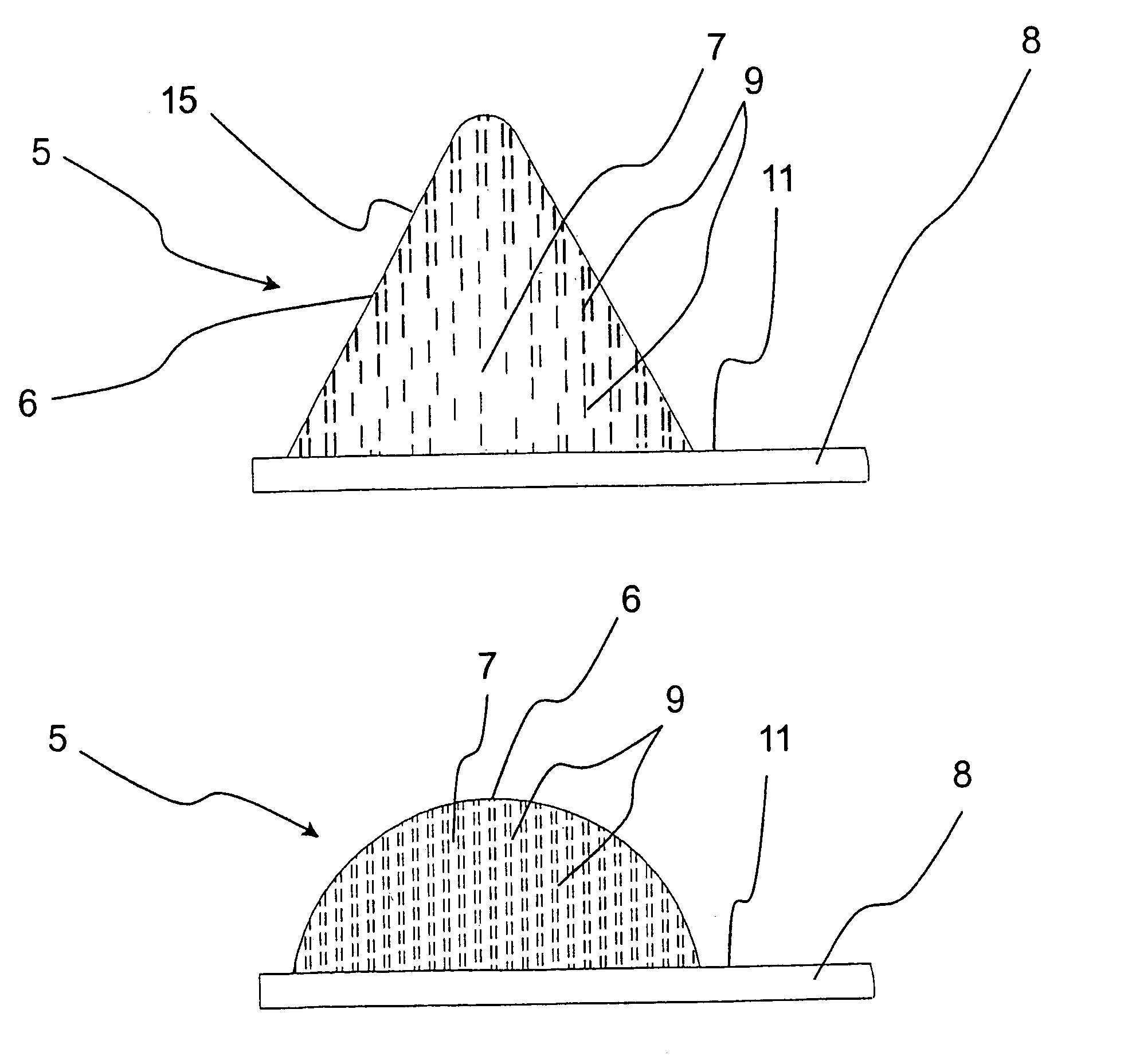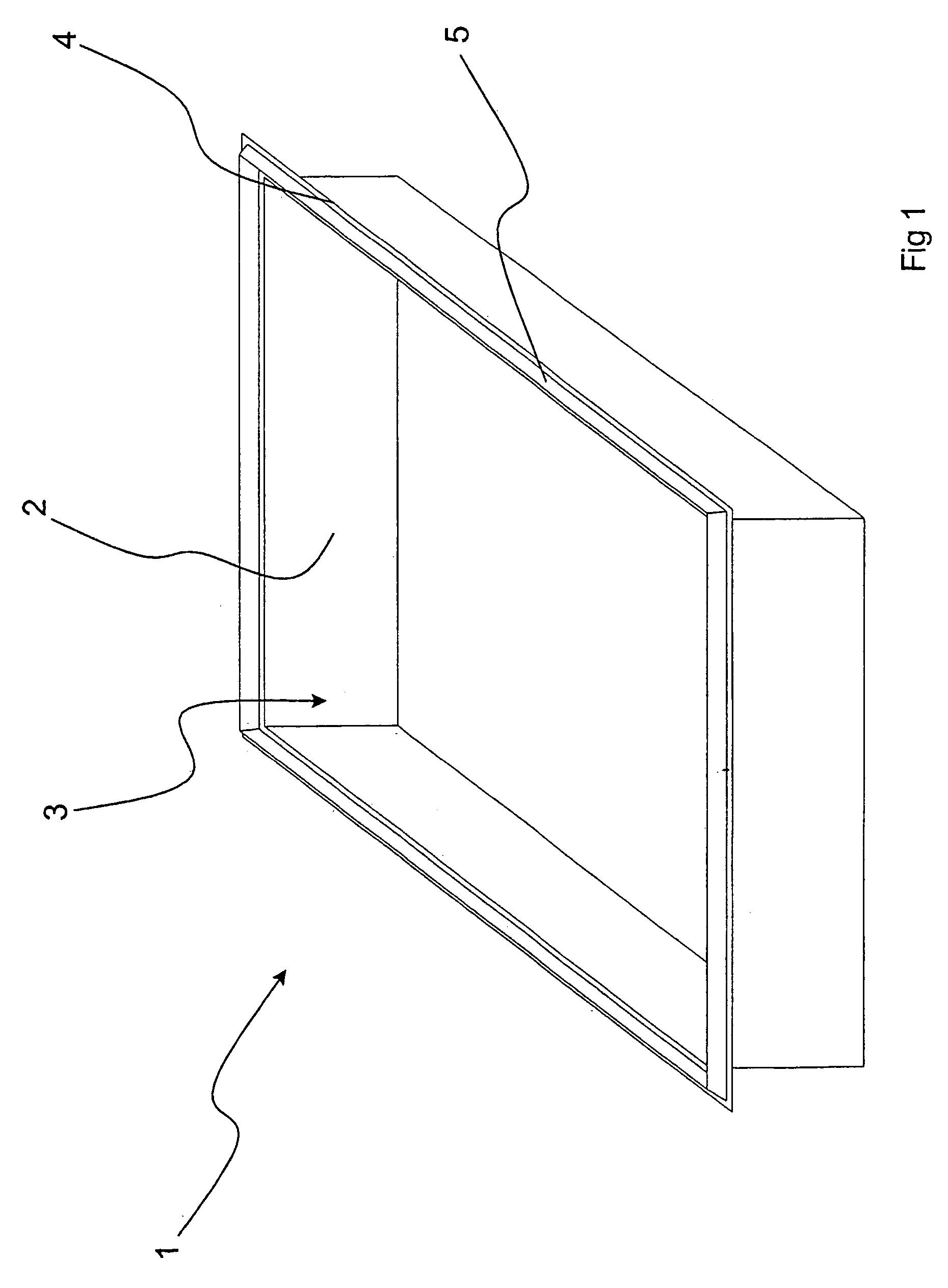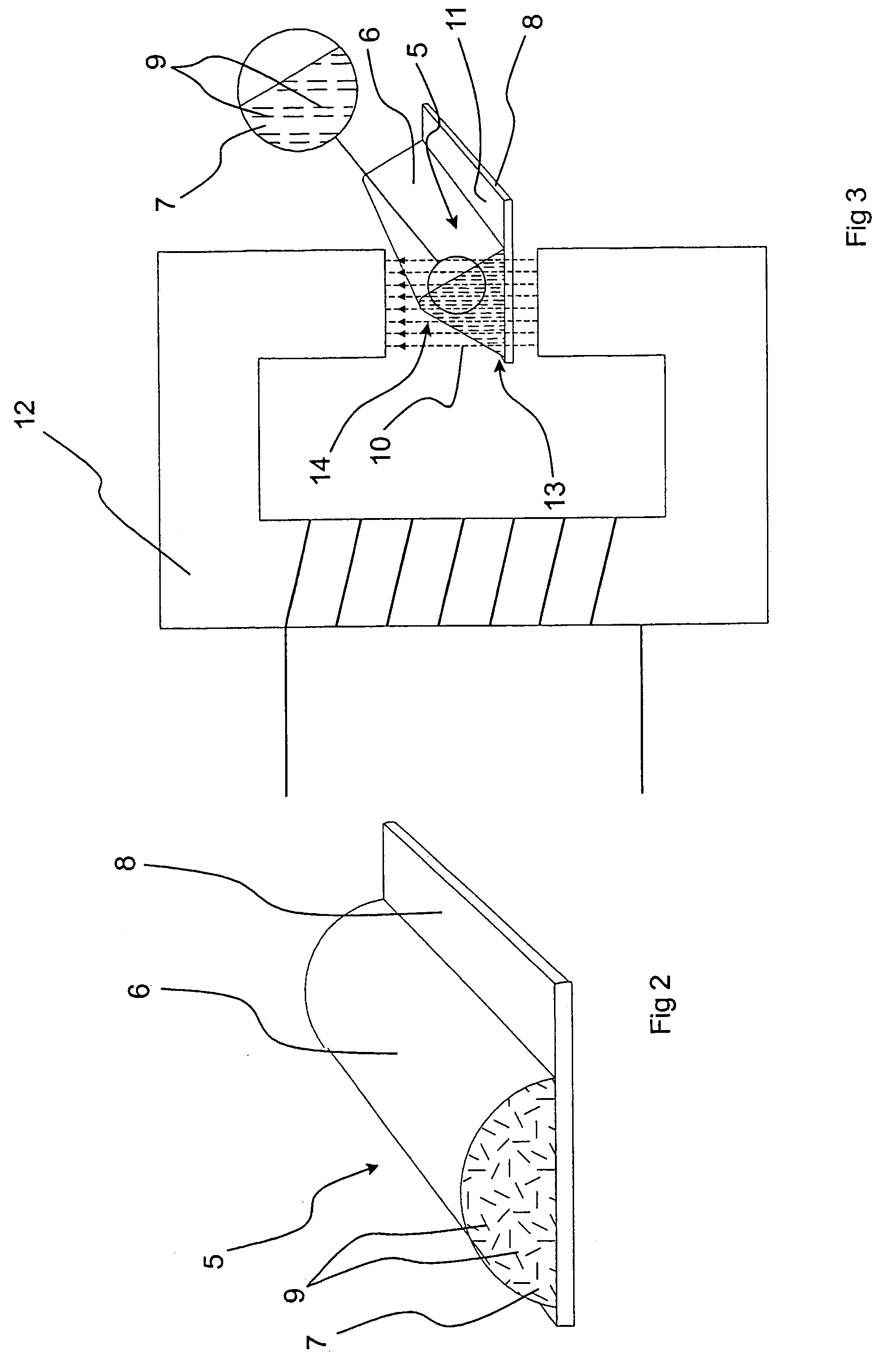Element for electromagnetic shielding and method for manufacturing thereof
a technology of electromagnetic shielding and elements, applied in the direction of magnetic recording, printed circuit aspects, non-conductive materials with dispersed conductive materials, etc., can solve the problems of difficult manufacturing, difficult to provide more complicated designs of elements, and relatively expensive particles that provide the electrical conductivity of elements, so as to reduce the compression force, reduce the need for particle further reduction, and reduce the effect of electrical conductivity
- Summary
- Abstract
- Description
- Claims
- Application Information
AI Technical Summary
Benefits of technology
Problems solved by technology
Method used
Image
Examples
Embodiment Construction
[0051]FIG. 1, to which-reference is made, illustrates an inventive device 1 for electromagnetic shielding.
[0052]The device 1 comprises a casing 2 with an opening 3 and a flange 4 surrounding the opening 3. The casing 2 has substantial electrical conductivity and can thus be made of metal or metallised plastic. The casing 2 may also comprise a body without substantial conductivity, in which case a layer of substantial conductivity is applied to the inner and / or outer surface of the casing 2.
[0053]The device 1 further has an element 5, which is applied to the circumferential flange 4 and has a shape tapering from a base towards an apex. The tapering shape means that the force required for compressing the element 5, and thus providing good electric contact, is reduced.
[0054]The element 5 is made of an elastic material which carries particles with substantial electrical conductivity. According to a preferred embodiment, the elastic material consists of silicone rubber while the particle...
PUM
| Property | Measurement | Unit |
|---|---|---|
| magnetic field | aaaaa | aaaaa |
| diameter | aaaaa | aaaaa |
| height | aaaaa | aaaaa |
Abstract
Description
Claims
Application Information
 Login to View More
Login to View More - R&D
- Intellectual Property
- Life Sciences
- Materials
- Tech Scout
- Unparalleled Data Quality
- Higher Quality Content
- 60% Fewer Hallucinations
Browse by: Latest US Patents, China's latest patents, Technical Efficacy Thesaurus, Application Domain, Technology Topic, Popular Technical Reports.
© 2025 PatSnap. All rights reserved.Legal|Privacy policy|Modern Slavery Act Transparency Statement|Sitemap|About US| Contact US: help@patsnap.com



